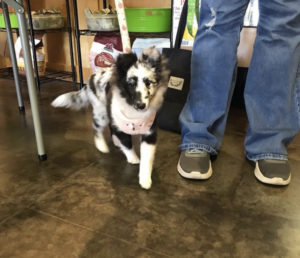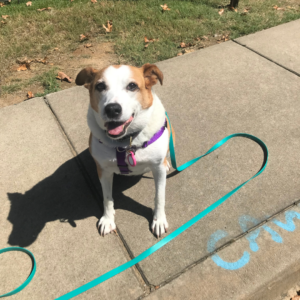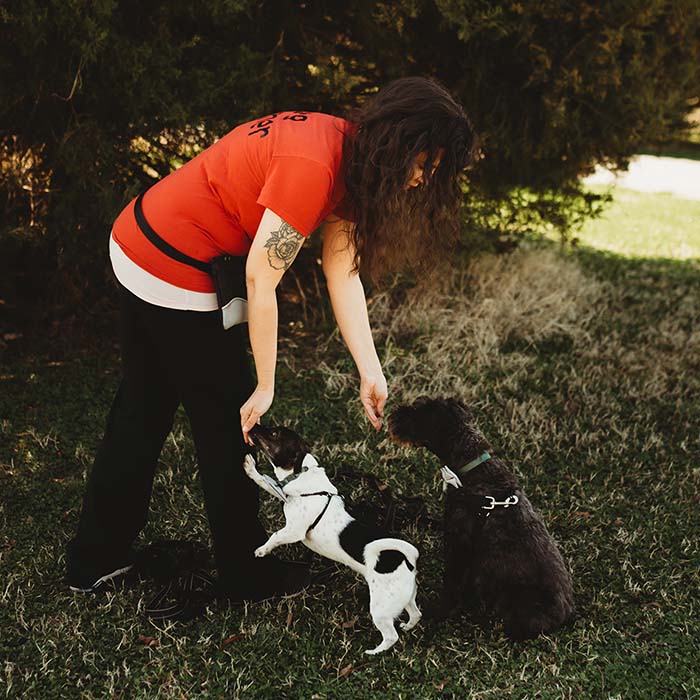Classes are scheduled
Plus some additional announcements
Things have been pretty hard hit with COVID, but what doesn’t go away is a need for dog training services. I am planning to start classes on July 11. I will be offering Puppy Kindergarten at 5:30 pm on Wednesdays and at 10 am on Saturdays. Level 1 will be at 7 pm on Wednesdays and 11:30 on Saturdays. My fun socialization class, Puppy Party, will be at 1:30 pm on Saturdays. Everyone who expressed interest so far will receive or should have received an email on how to reserve a spot for the classes. The puppy parties are drop-in style, with RSVP required every week, but my other classes will be six weeks long.
Masks are required, and social distancing will be maintained. I have no interest in putting anyone at risk, especially since I do provide services for the more vulnerable in our communities.
Class Descriptions
Puppy parties are for puppies under six months of age. The earlier the better — puppies under four months are welcome to participate as long as they’ve begun their vaccinations, are determined to be in good health by your veterinarian, and have a negative fecal test. Please do check with your vet first. If they recommend otherwise, do not bring your puppy (I can explain more why, but please know that dog trainers and veterinarians often disagree on the importance of the socialization period). This is mostly playtime and some training, along with confidence building. Puppies often start to test boundaries around four months old, so beginning training as early as possible and exposing them to as many different types of situations as possible helps a puppy grow into a confident adult. This is a drop-in style class and RSVPs are required each week. These take place on Saturdays at 1:30 pm and cost $15 for an hour.
Puppy Kindergarten sets the foundation for a lifetime of learning with puppies under six months. This class is a mix of playtime and training. Classes cover cues such as sit, take a break, down, look, stay, drop it, leave it, touch, loose leash walking, recall, and appropriate greetings. Additionally, handlers will learn how to proof a behavior by varying distance, distraction, duration, and location; how to encourage reliable response without a treat in hand; and how to identify and encourage appropriate play behavior. These are on Saturdays beginning July 11 at 10 am and Wednesdays beginning July 15 at 5:30 pm and cost $120 for six weeks.
Level 1 covers cues for dogs of any age, including sit, take a break, look, down, stay, loose leash walking, recall, leave it, drop it, touch, meet and greets, and a few tricks if time permits. This class is all business and learning. Additionally, handlers will learn how to proof a behavior by varying distance, distraction, duration, and location, and how to encourage reliable response without a treat in hand. These are on Saturdays beginning July 11 at 11:30 am and Wednesdays beginning July 15 at 7 pm and cost $120 for six weeks.
If you have any questions, give me a call or shoot me an email at info@telltaildogtraining.com.

Examining what I need to do as a dog trainer
There is a lot happening with our country as well, and I wanted to address that briefly. I’m looking for ways moving forward that I can dismantle the things I’ve believed for so long and rebuild. Dog training has always been a fairly white-washed industry. I’ve known that for some time, but I believed a lot of lies about it in general. I do want to be clear, I believe we’re in the midst of a crisis, with everything coming to a head. Black Lives absolutely Matter. I am doing the work as an individual, and I want to examine how my dog training business can help as well. Dogs have been used throughout history to terrorize and hurt. I’ve decided to start doing a separate series, but as part of the podcast, on historical use and background, starting with BSL in a few weeks. For those who don’t know, BSL is an abbreviation for Breed Specific Legislation. Whenever a city or town considers removing the legislation, there are people across the country who send awful things to those speaking out against it or voting on it. I don’t agree with BSL and have the research and personal experience that shows that breed itself is not a defining characteristic in determining how dangerous a dog is. I’ll be going into that more with this new series. Tuesdays will be the regular, dog training stuff and stories. Thursdays will be the more historical, industry stuff. Feel free to email me with any requests. And I’ll always cite my sources.
I want Telltail Dog Training to be a space where both people and dogs can feel safe.
In general though, while the podcast will continue, I’ve decided to put a hold on videos and the YouTube channel for now. I don’t have the resources or the internet connection to get both the podcast and the videos edited and uploaded in a timely fashion, and I’ve found myself struggling every week. So, just the podcast it is.
Stay tuned for other exciting announcements coming up soon. I’m joining forces with a Maumelle-based dog walking and pet sitting company, to be a one-stop shop for all your pet needs, except for medical. I do not, as a dog trainer, given medical or much health advice. I leave that to the folks that have gone to school for quite a few years for that. But I’m happy to start offering all of the other needs in one spot: grooming, dog walking, pet sitting, and dog training. I’ve included a new tab on my website.
I’m also going to be adding resources for rescue and puppy, if anyone is looking to add a new friend to their family, as I’ve been working with CARE for Animals on some helpful sources.
What I learned after bringing Jeeves home
In 2012, I was living in Colorado. Durango, to be specific. In 2010, I had moved to Colorado from New York City, where I’d earned my degree in English Literature. I had the intention of becoming a journalist. I’d done internships with newspapers and marketing departments, I’d been published in magazines. But when I first arrived in Colorado, I couldn’t find a journalism position. Instead, I started working for nonprofits. I did some admin work, then moved into marketing. Two years later, in 2012, I was sharing a house with two other roommates, I was financially stable, and I was ready for a dog.
I was still a little scared about trying to get a dog of my own, due to my experience with Sheba (you can see the podcast I did about her). But I couldn’t stop thinking about getting a dog.
Unfortunately, the landlord didn’t want a dog in the house. He’d just put in new carpets, he said. So we invited him over and baked some cookies and asked him what sort of dog might change his mind. He said he could probably deal with a small, nonshedding dog. We said deal.
One of my roommates found a breeder who had miniature schnauzers up in Denver. I started researching the breed. I discovered they were smart and often stubborn, and that they thrived with training. I discovered that they came in different colors, but were primarily gray and white. My roommates got their dog in August, a couple of months before I got mine in September.
I picked him from a photo. I wanted a black one, and I saw his little beard and knew he was mine. I put down the deposit.
When I traveled to Denver with a friend, we met the breeder in the parking lot of a Walmart, and I first heard him when someone accidentally stepped on him and he first did his little yelp scream, something he still does when he’s startled or scared.
When it comes to where you get or have gotten your dog, as a dog trainer, I only suggest that doing the research. I’m also always happy to offer sources and information. If you would like to hear more about breeders and rescue and finding a dog, let me know. I’m happy to do a podcast on puppy mills and pet stores.
With Jeeves, training was a big priority for me nearly eight years ago. He learned how to sit and down (the YouTube video has some footage!) at home. Then he took a level 1 class at a pet store. And we finished Canine Good Citizen with a dog training company. I did remember feeling a bit frustrated in both of the classes. We learned a lot, but the first instructor told me, when Jeeves struggled with learning how to roll over, that he just couldn’t do it. Now, years later, I know that’s not necessarily true. She just taught me one method that didn’t work. I now know about three different ways to teach a rollover.
The second class was frustrating because it was clicker based and there were so many people in the class. I had no idea if I was doing things correctly. But we passed and learned some things along the way.
I became a dog trainer five years after bringing Jeeves home. As a trainer now, I have about four to ten ways of teaching a behavior, like sit, down, or touch. I also modify expectations as needed if a dog is struggling for any reason. Because as a trainer, it’s also my responsibility to find an answer if all my usual methods don’t work. It’s a chance to be creative while using methods like:
- A marker word. A clicker is a marker, but I’ve found that when people have to hold treats, maybe a treat pouch, their dog’s leash, be mindful of their words and body, and all of that, trying to use a clicker can be just a little bit too much. But I’m always happy to teach clicker training if interested. Please bring a clicker to class if you’d like to. It’s all about timing and establishing something, whether a word or a noise, as a marker to indicate that what the dog did was correct and that a reward is coming.
- A reward. Not all dogs like treats, but a treat is the easiest and simplest way to establish communication and reward desirable behavior. It can also be affection or playtime or a ball. Anything that a dog would like can be used to reinforce training.
- A gradual plan. Increasing training gradually across distance, duration, distraction, and difficulty is the best way to get reliable behaviors. It can take time, but I can tell you that I’ve seen the difference between the first class someone takes with their dog and the final class. The progress is there and pretty cool to watch.
- A small class size. I was taught how to teach a group of six people and their dogs. I kept the size even smaller, at four, before COVID because it’s just me and I want to provide individual attention. The size will continue to stay small, plus with masks and social distancing. It is all personalized here.
I’m excited to get going. Be sure to email me at info@telltaildogtraining.com to reserve your spot or to ask any questions.




